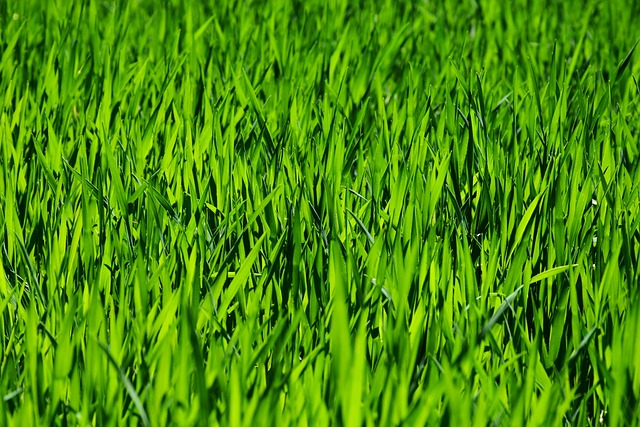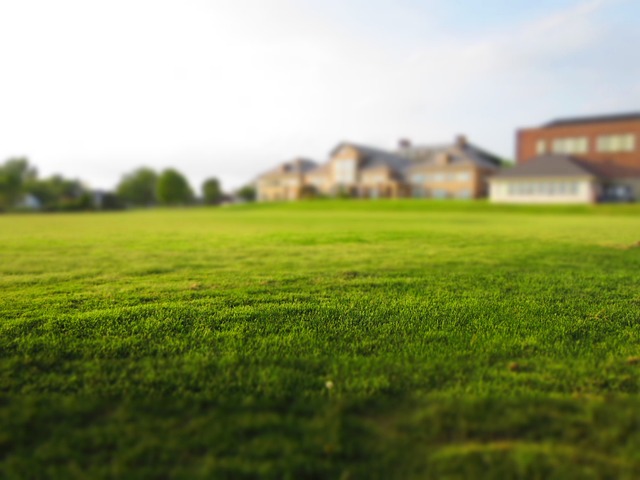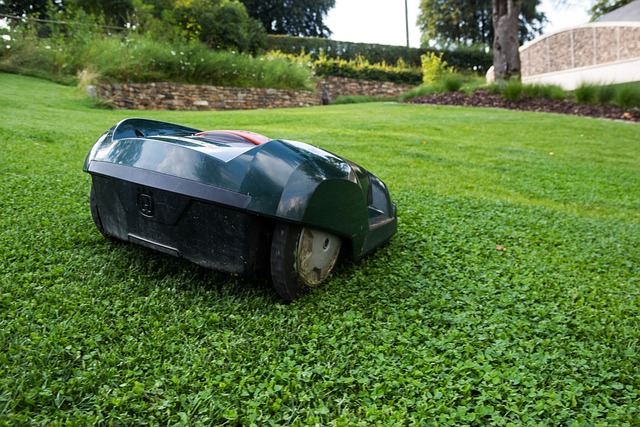A successful lawn and landscape require a strategic approach that includes regular lawn mowing at the correct height for your grass type, aeration for improved root growth and soil health, and a tailored fertilization program informed by regular soil testing to maintain nutrient balance. Landscaping involves planting a diverse array of plants to add color and texture, complemented by an efficient irrigation system that delivers precise water amounts to both grass and gardens, conserving water and resources. Mulching helps to retain soil moisture and suppress weeds, while understanding and adjusting your soil's pH and enriching it with organic matter are key for a thriving garden ecosystem. Effective lawn care and landscaping also involve strategic watering practices, such as deep, infrequent irrigation to promote root growth and the use of drip systems for garden beds to conserve water. Implementing these lawn care and landscaping strategies not only enhances your property's curb appeal but also supports a sustainable outdoor environment that is both beautiful and resilient.
Embarking on the journey of garden maintenance and landscaping design is a rewarding endeavor that not only enhances the beauty of your outdoor space but also contributes to the health and vitality of your lawn. This article delves into the art and science of lawn care and landscaping, offering practical advice for nurturing a vibrant lawn and designing an aesthetically pleasing garden that stands out in your community. From essential practices for vibrant lawn care to landscaping design principles that maximize visual impact, learn how to create an outdoor oasis that elevates curb appeal and provides year-round enjoyment. Explore strategies for strategic watering, effective weed control, managing pests and diseases, and seasonal lawn care tips, all of which are key components in maintaining a lush and resilient lawn. Additionally, discover how to select plants that thrive in your region, incorporate hardscapes for both functionality and charm, and utilize landscape lighting to accentuate your garden’s features after dark. Whether you’re a seasoned gardener or new to landscaping design, these insights will guide you in transforming your lawn into a space of tranquility and beauty that reflects the pride of your home.
- Essential Practices for Vibrant Lawn Care
- – Understanding Soil Composition and Fertilization Needs
- – Strategic Watering Techniques to Maintain Lushness
Essential Practices for Vibrant Lawn Care

Maintaining a lush, vibrant lawn requires consistent care and attention to detail. A robust lawn care regimen should begin with regular mowing at the correct height for your grass type. This practice encourages root growth and deters weeds, contributing to a thick, healthy turf. Aeration is another vital practice; it allows air, water, and nutrients to penetrate the soil, reaching the roots of your lawn effectively. In addition to aeration, apply a balanced fertilizer tailored to local soil conditions and grass varieties to ensure optimal nourishment. Regularly testing the soil can help identify any nutrient deficiencies or pH imbalances that may affect lawn health.
For a thriving landscape, landscaping strategies complement lawn care. Integrating diverse plant species, including ground covers and accent plants, adds texture and color to your yard, creating an aesthetically pleasing environment. Irrigation systems should be optimized for efficiency, delivering the right amount of water to both grass and garden beds without waste. Mulching these areas not only conserves moisture but also suppresses weed growth, maintaining the clean lines and beauty of your landscaping design. The combination of a well-maintained lawn and thoughtful landscaping designs elevates the curb appeal of any property and provides a welcoming outdoor space for relaxation and enjoyment.
– Understanding Soil Composition and Fertilization Needs

Engaging in lawn care and landscaping requires a keen understanding of soil composition and its impact on plant health. Soil is the foundation upon which healthy gardens and lush lawns thrive, and its structure, texture, and nutrient content are crucial for plant growth. To optimize soil fertility, one must first assess its composition, including organic matter content, pH levels, and drainage properties. A simple soil test can provide valuable insights into the nutrients present and those that may be lacking. Based on these results, gardeners can tailor their fertilization plan to address any deficiencies. For instance, adding compost or peat moss can increase soil organic matter, which improves its ability to retain moisture and nutrients. Adjusting pH levels is another essential aspect of soil care; many plants prefer a slightly acidic to neutral pH, and lime or sulfur can be used to correct imbalances. Regular fertilization with a balanced, slow-release product can ensure that lawns and gardens receive the necessary nutrients throughout the growing season. By understanding and adapting to soil composition needs through thoughtful landscaping and lawn care practices, gardeners can create a vibrant and resilient outdoor space that stands the test of time.
– Strategic Watering Techniques to Maintain Lushness

Engaging in strategic watering techniques is a cornerstone of maintaining a lush, vibrant garden, which falls under both lawn care and landscaping practices. To optimize plant health and conserve water, it’s crucial to understand the specific needs of your plants and soil types. Deep, infrequent watering encourages deep root growth, which is more sustainable in the long run compared to shallow, frequent irrigation. Employ drip irrigation systems for beds with perennials or annuals, as they deliver water directly to the plant’s roots, minimizing evaporation and promoting efficient use of resources. For lawns, early morning or late evening is the ideal time to water, reducing evaporation and avoiding fungal growth that can occur with damp foliage throughout the day. A well-designed irrigation system, a key aspect of effective lawn care and landscaping, should be tailored to deliver the right amount of water at the right frequency for each distinct area of your garden. By adopting these targeted watering strategies, you can ensure that every blade of grass and flower receives the hydration it needs without waste, contributing to a lush and beautiful outdoor space all year round.
Lawn maintenance and landscaping are integral practices for cultivating a thriving outdoor space. By adhering to essential lawn care strategies, such as comprehending your soil’s composition and fertilization requirements, and implementing strategic watering techniques, you can ensure your lawn remains lush and vibrant. These practices not only enhance the aesthetic appeal of your property but also contribute to a healthier environment. Embracing these landscaping principles allows for a beautifully maintained garden that can serve as an oasis in any setting.
